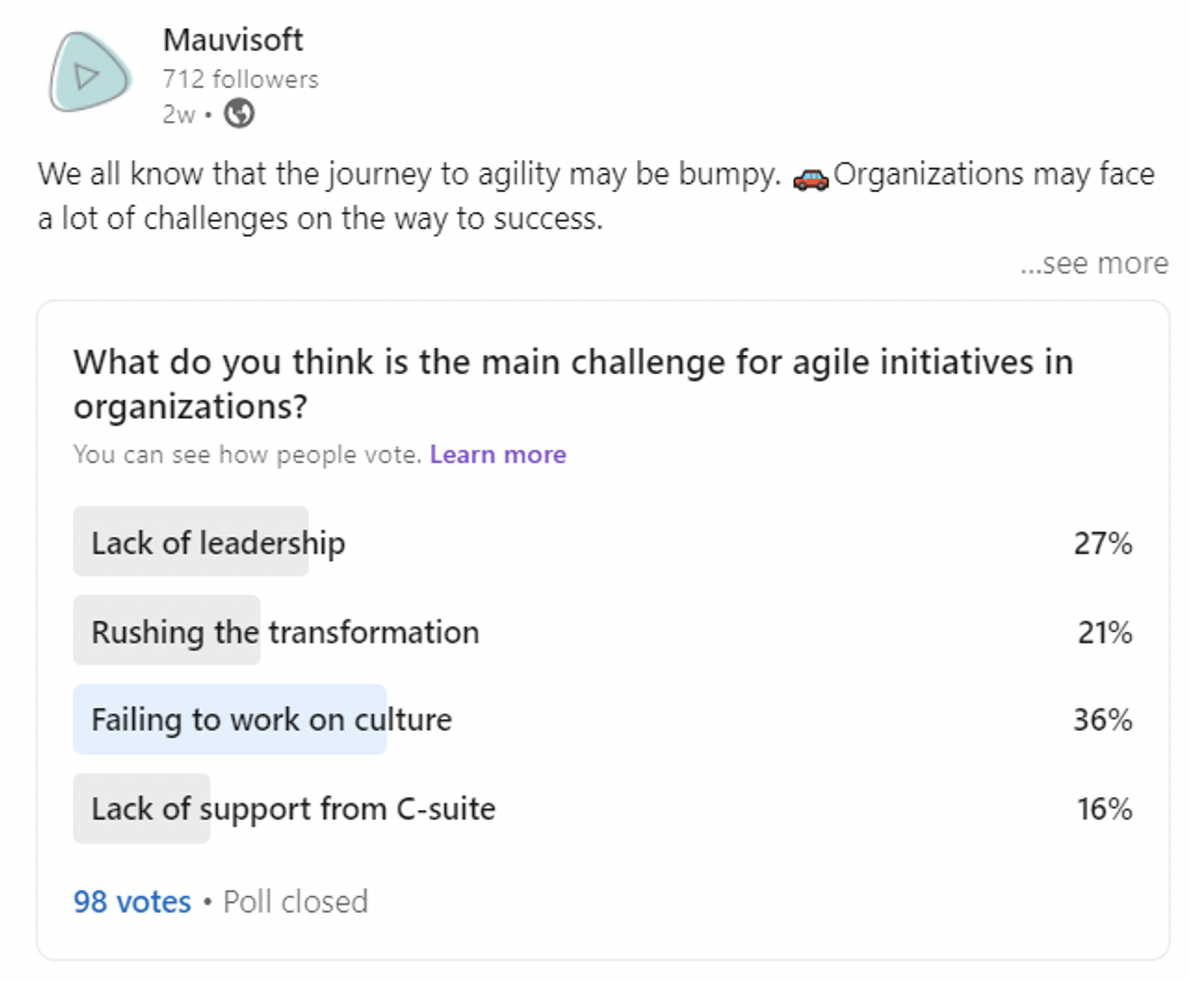When we asked people what they think is the main challenge of the agile initiatives in organizations, most respondents have chosen “failing to work on the culture”. It was an unexpected choice for us, so we decided to dig deeper into the topic and talk to an expert. We asked David Anderson why he thinks respondents have chosen this option, what other challenges he observes and how to properly deal with them.

Recently we ran a poll in our LinkedIn group asking people what they think is the main challenge of the agile initiatives in the organization. Among 98 respondents 36% have chosen “failing to work on the culture”, 27% – “lack of leadership”, 21% – “rushing the transformation” and 16% – “lack of support from the senior management of the company”.

- David, why do you think respondents gave their preference to this option?
It does not surprise me that failing to work on culture is the #1 choice. When the right culture is not in place it`s hard to get new ways of work adopted. And the second one, lack of leadership, I think is related. Because changing the culture requires leadership to signal and encourage new culture. To lead by an example, by inspiration, and therefore to signal what the new culture is. Leaders can inspire and show people how to behave in a new way.
That is why to get new practices adopted, you need the right culture. To get the right culture – you need the right leadership.
In our studies, we`ve identified both – culture and leadership as important pillars to successful enterprise agility. They are the key pillars of the Kanban Maturity Model (KMM): the culture pillar is already there, and the leadership will become a separate pillar in a new edition of KMM 1.3. And of course, we are introducing specific guidance on culture hacking and leadership development in our training classes, books, and kmm.plus content.
- What other problems/challenges would you identify apart from those mentioned in the poll?
I think there is also a failure to understand the desired outcome. We see people pursuing agile for the sake of doing agile. Like it`s a club they are going to join. And there is a failure to define what is the business outcome we`re looking for. Or we`re looking for something more than that – a cultural or social outcome if the purpose and a mission of the business are more than just make money. Because there could be some additional higher purpose of contributing to society. In any case, initiatives should be driven by a purpose. And there should be means to measure progress against this purpose. Agile should not be a club you are joining. Agile methods should be a means to an end. That end should be a purpose-driven outcome.
Agile should not be a club you are joining. Agile methods should be a means to an end. That end should be a purpose-driven outcome.
- Are there any fast tips you could give leaders on how to work on culture so that agile initiatives do not fail?
As we mentioned before, leaders should lead by signaling. They should signal the cultural changes that they want. They need to inspire people to believe in that changes. They need to lead by example. One pragmatic actionable way of culture hacking is to use decision filters, simple mnemonics, that help you remember the desired behaviors and cultural outcome vs undesired. For example, stop starting and start finishing. That is a very good and simple mnemonic. It is the decision filter that helps to guide good decision-making. And it is aligned with a positive cultural change.
But of course, leaders are made, they are not born. They are made with hard work, wide knowledge, and a deep understanding of the human condition, psychology, and why people resist change. To be able to lead and manage change, you need to know how to do it properly. We do have courses at David J Anderson School of Management that can provide leaders with the right guidance. As well we provide personal coaching sessions with me or other experts where you can share your challenges and we will provide you with the best ways to address them.

Recent Comments